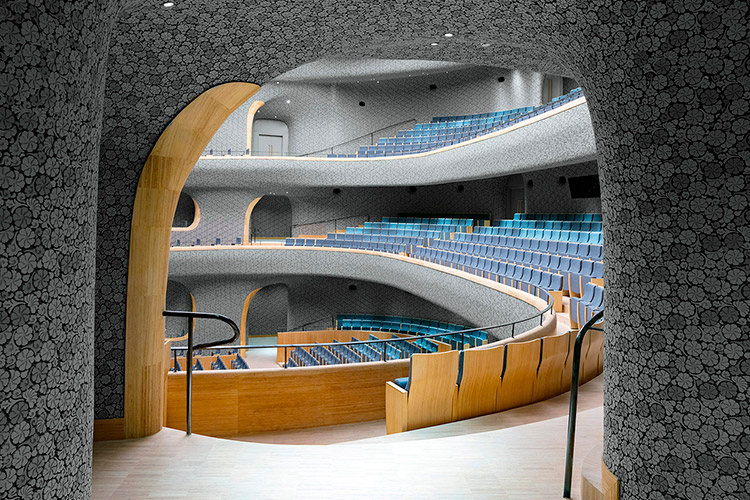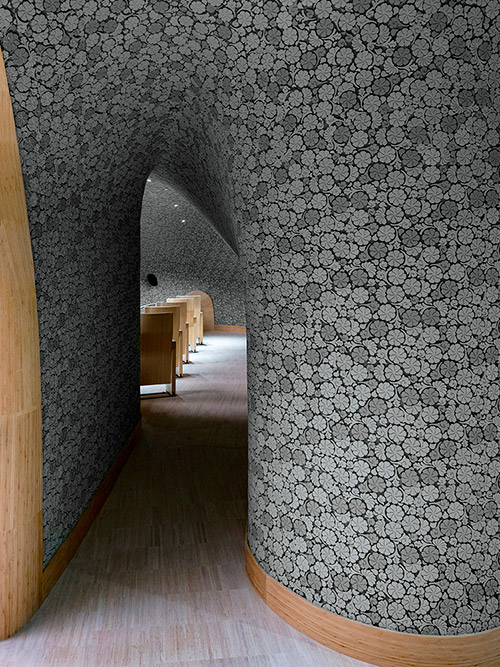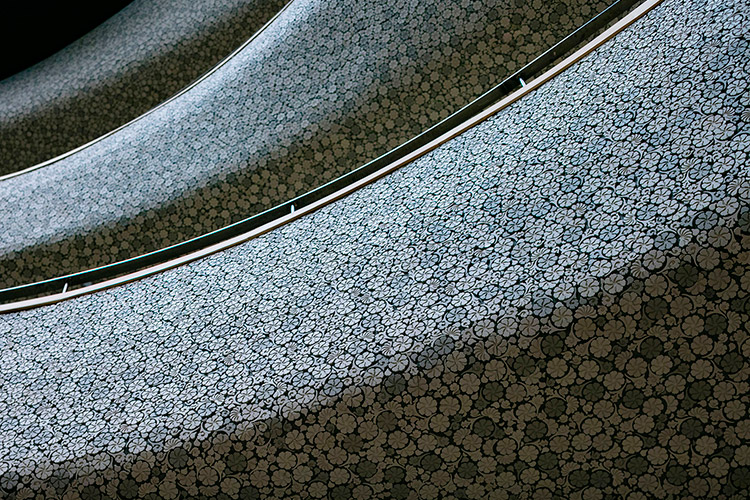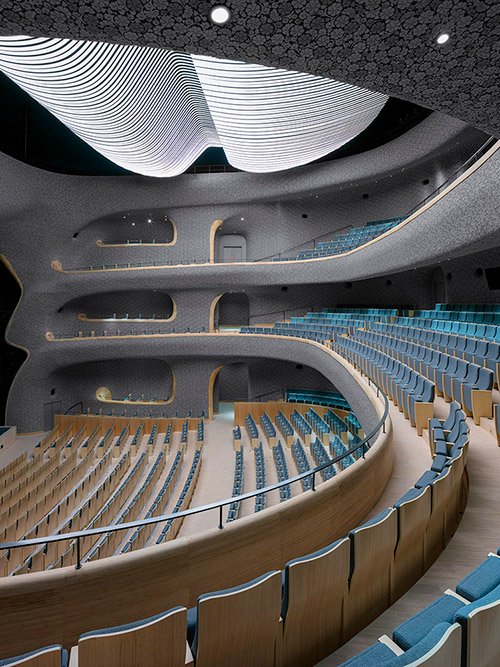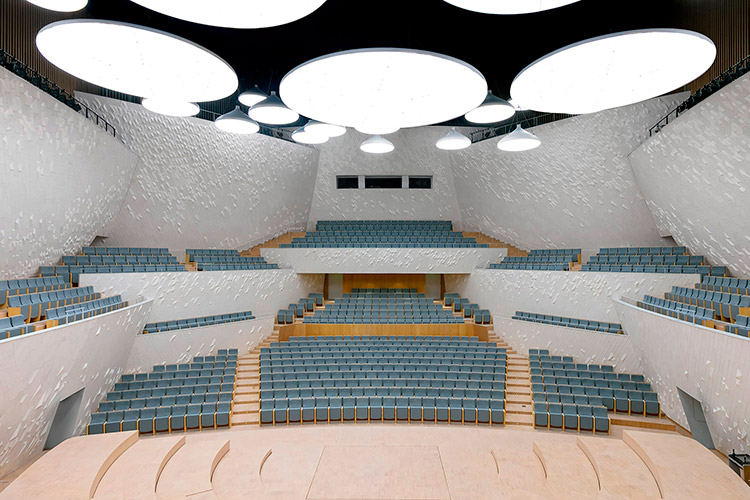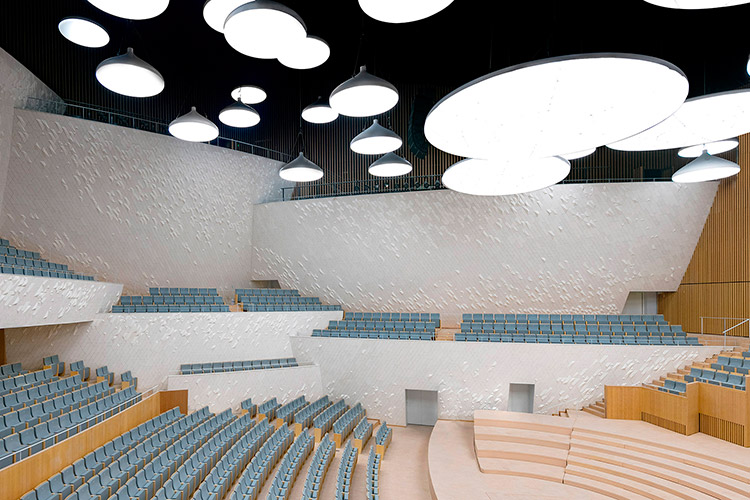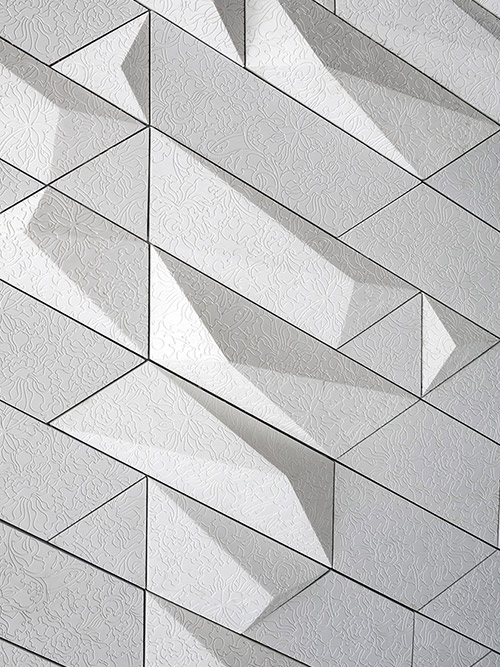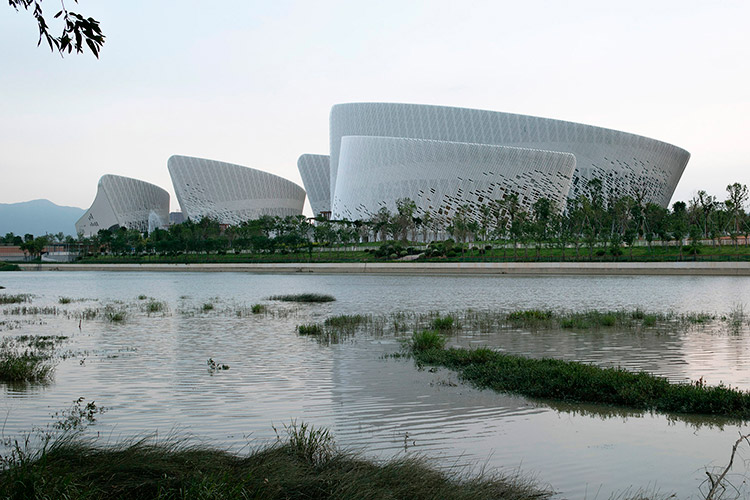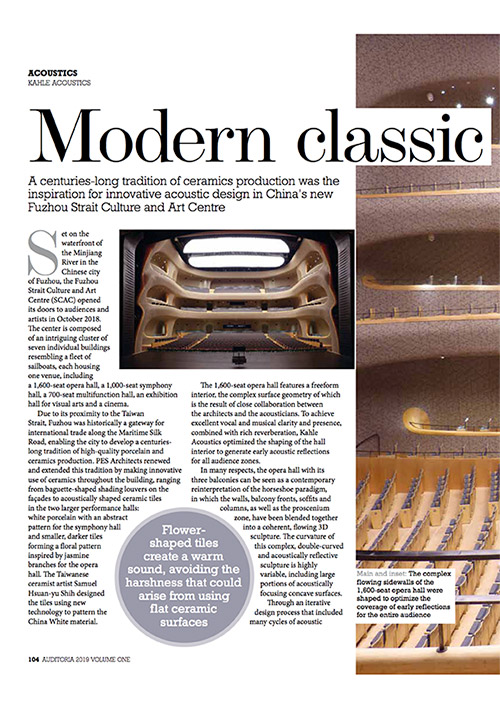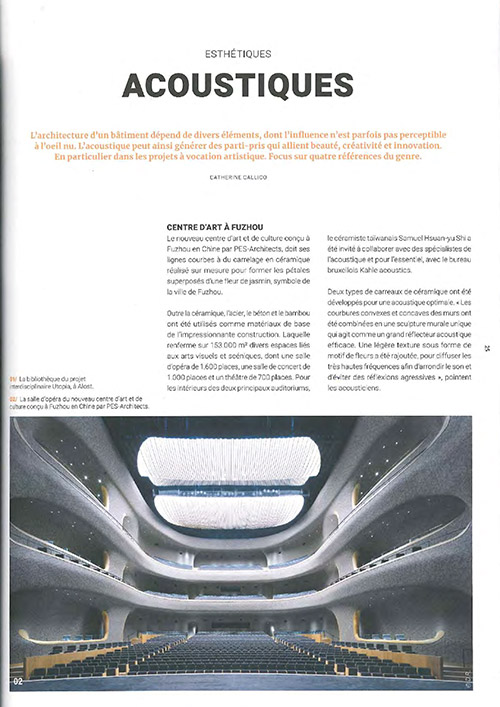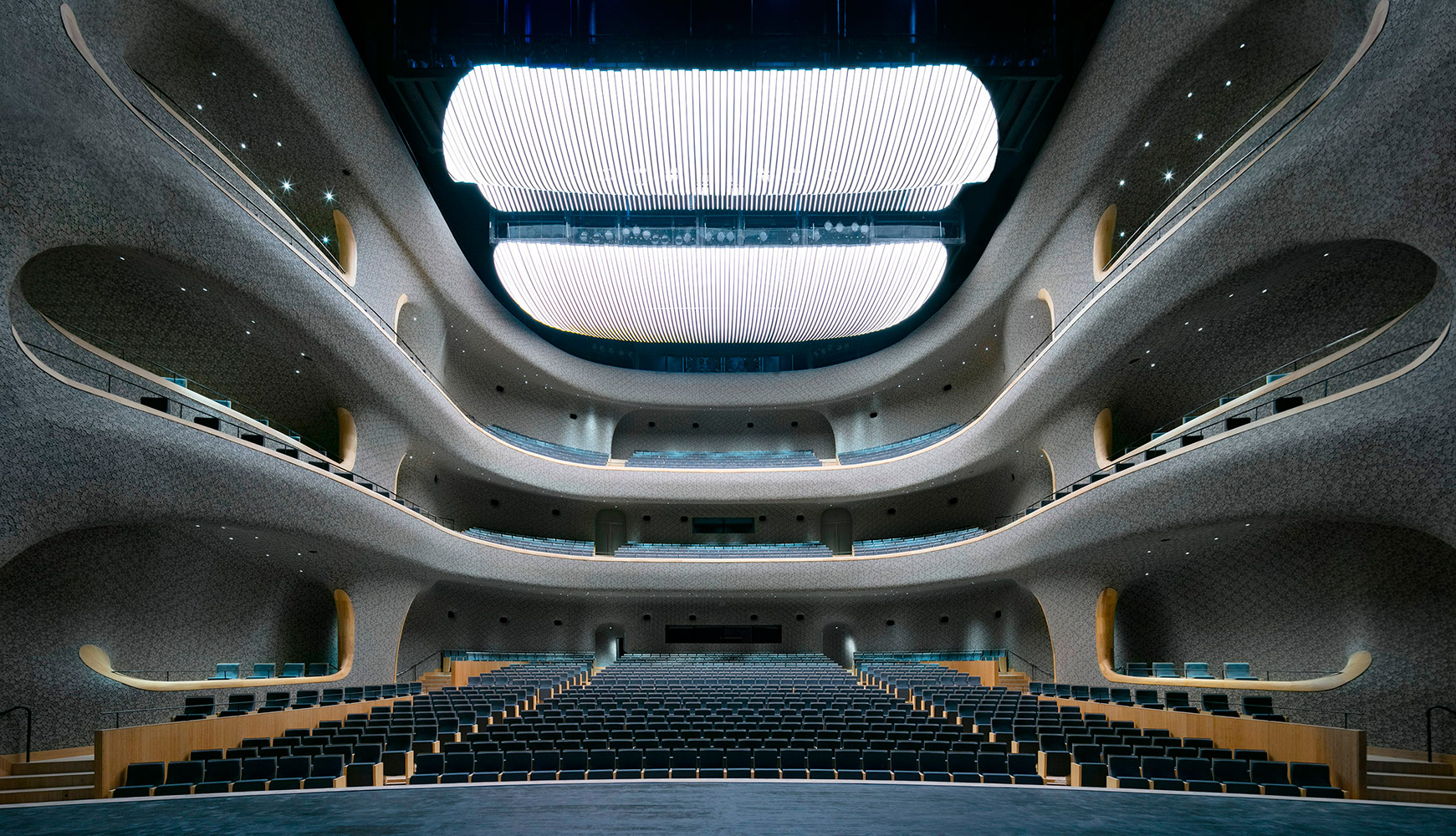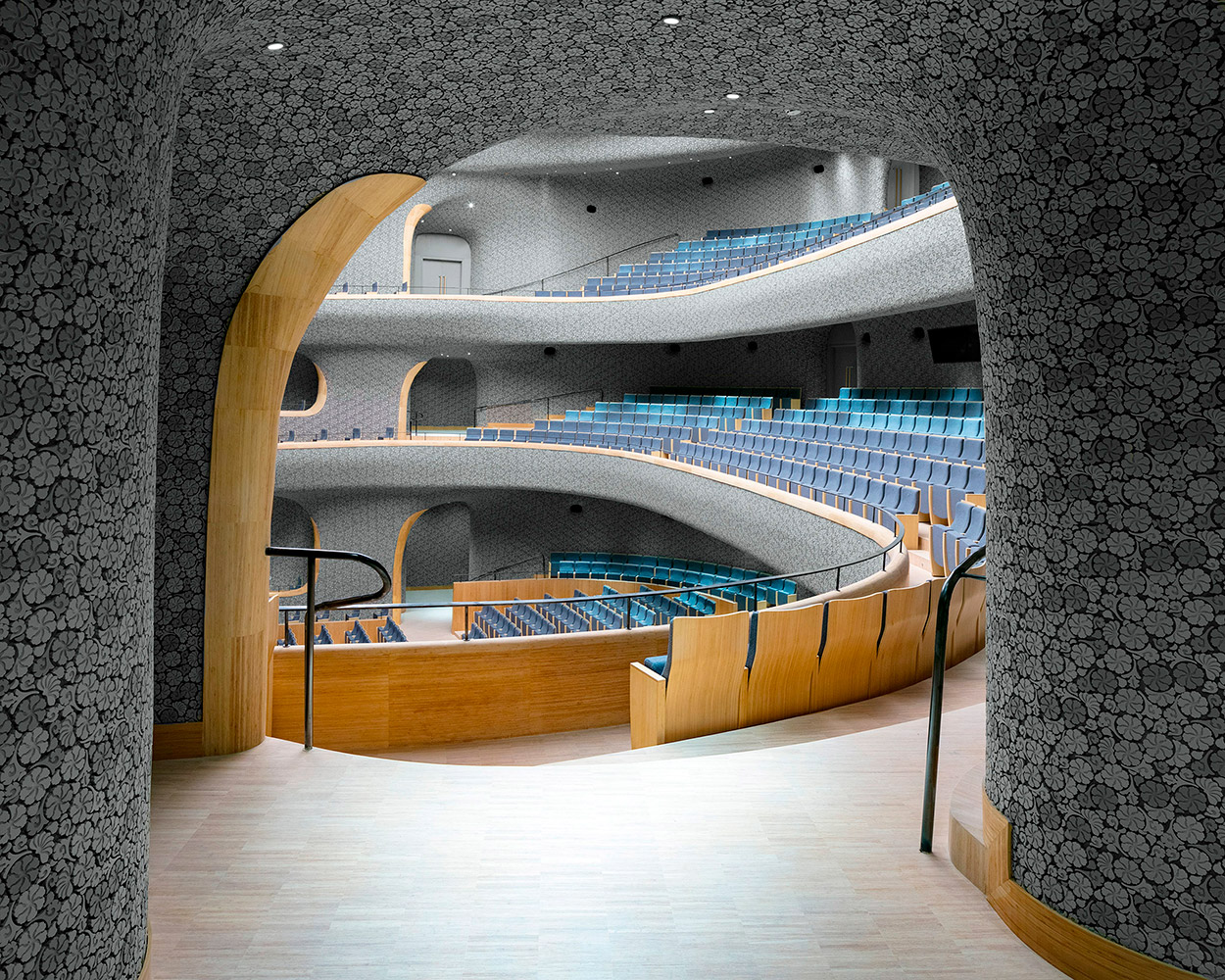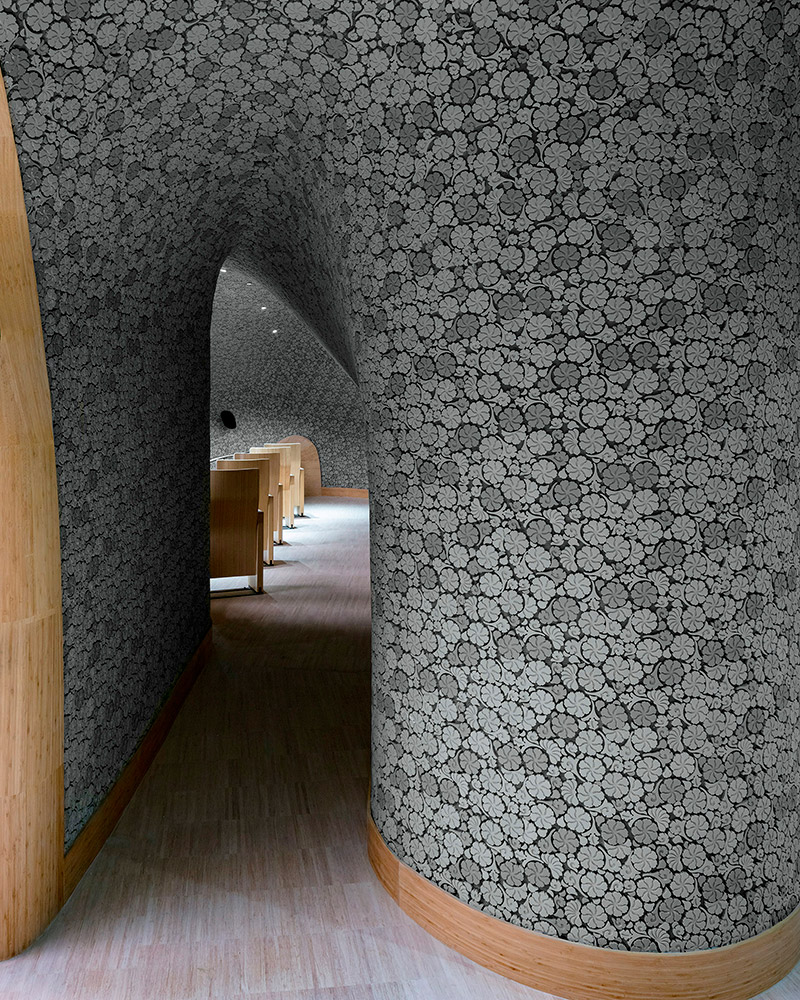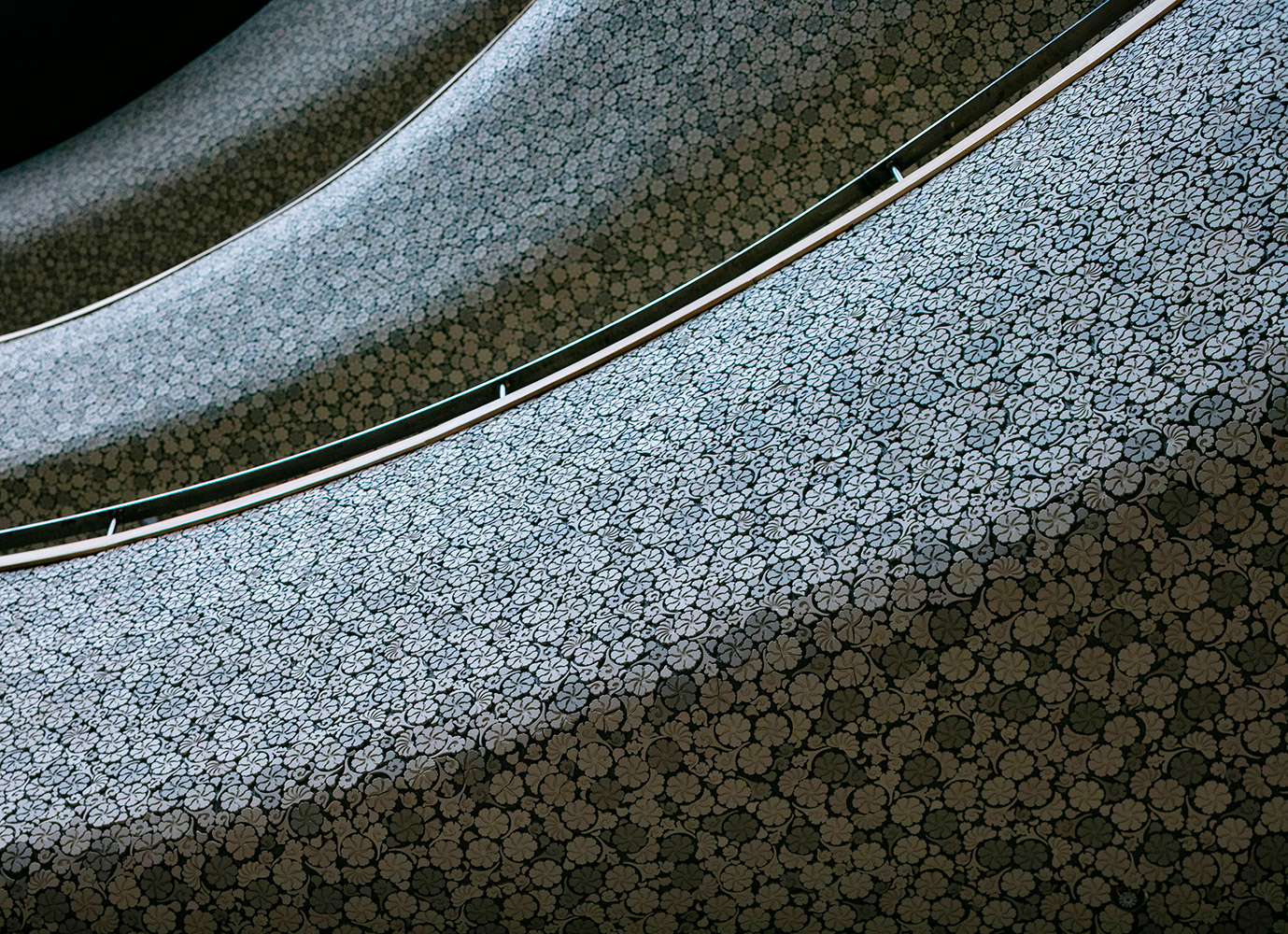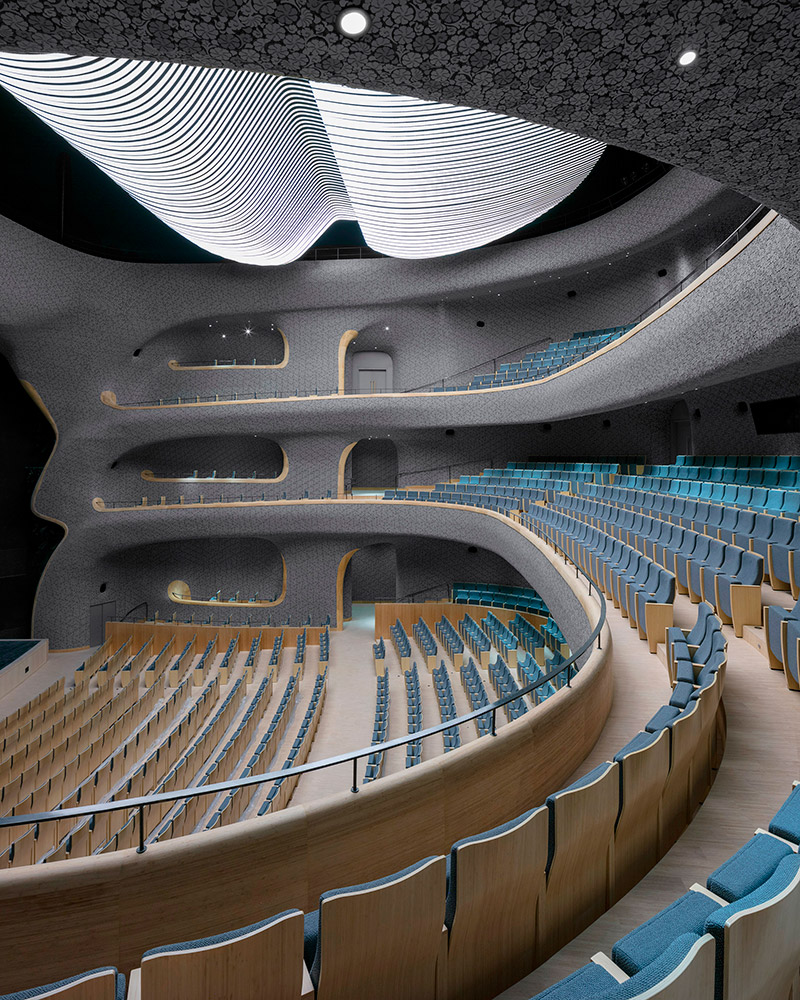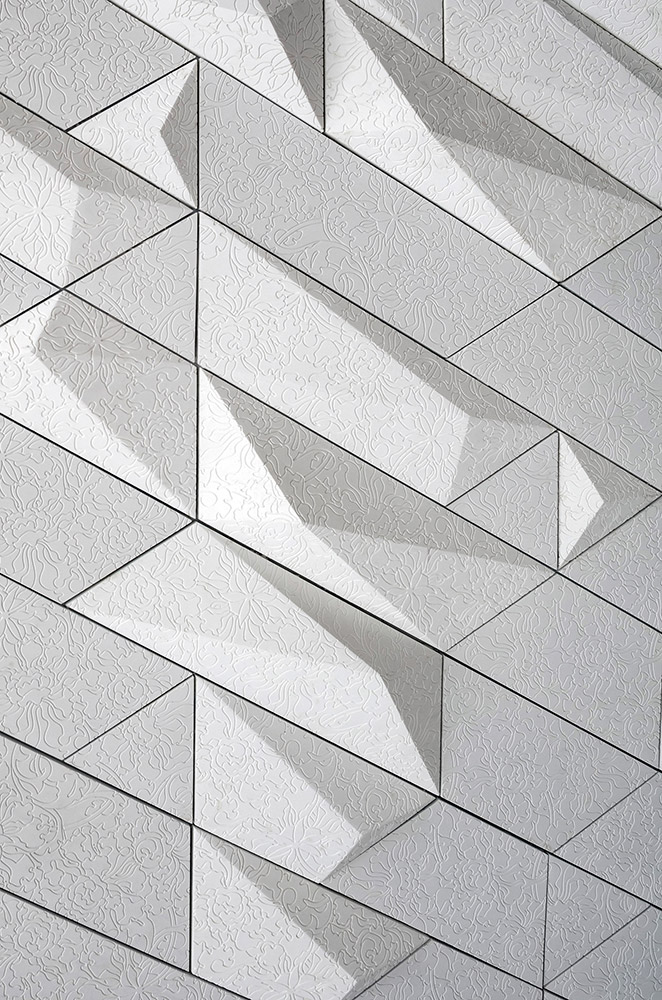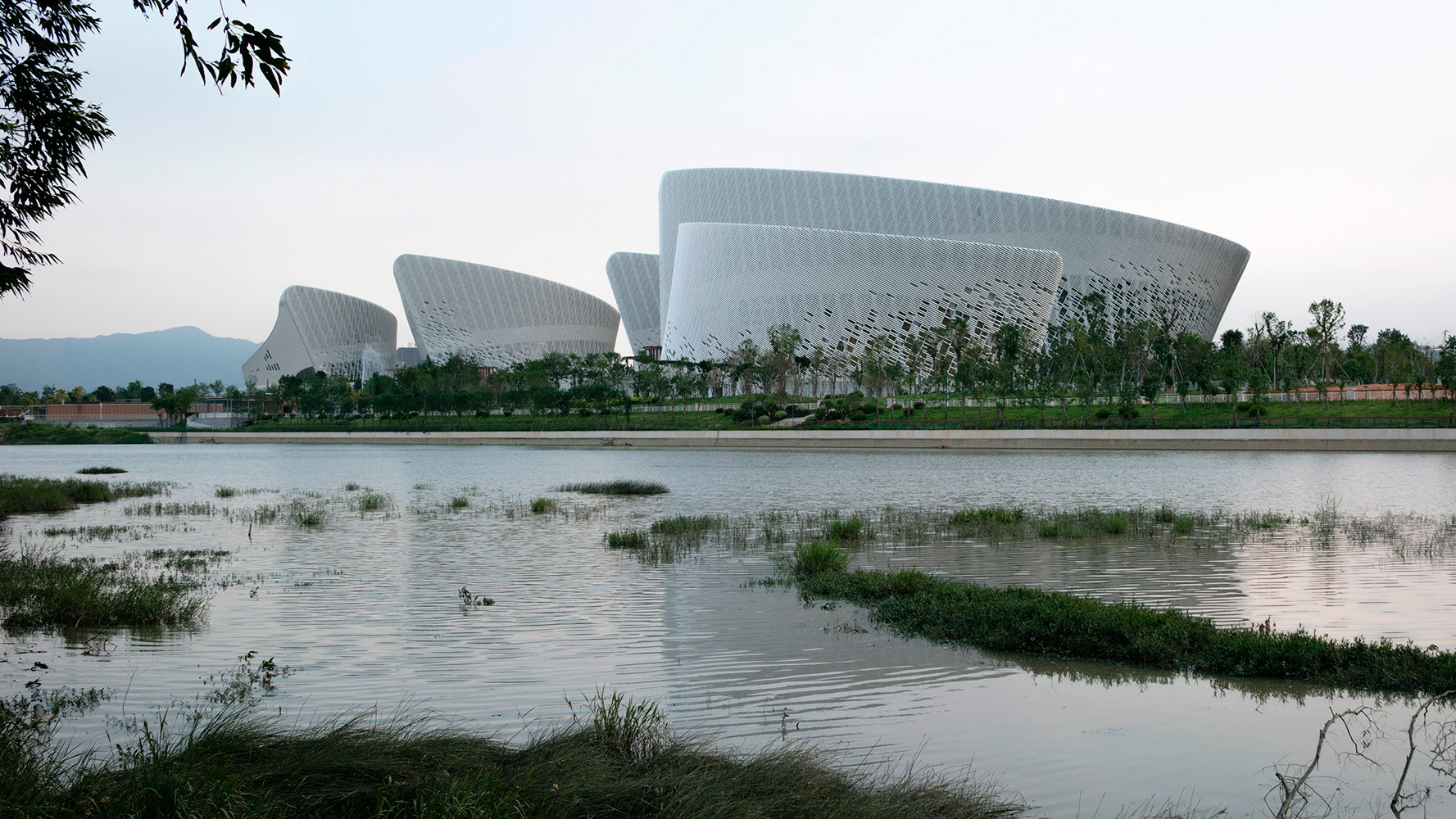Fuzhou Strait Culture and Art Centre
The starting point for the design was “Extraordinary experiences for ordinary users”, with the aim of creating a new type of cultural centre. The SCAC, Fuzhou Strait Culture and Art Centre, similar in size to the Sydney Opera House, is on the south-eastern coast, in a major commercial area between Hong Kong and Shanghai and it is the world first's ceramic theatre and concert hall.
Information Sheet
New Build Fuzhou Strait Culture and Art Centre.
Location Mawei New Town, Fuzhou, Fujian Province, China.
Project Cost 2 billion Yuan (approx. 253 million € according to the opening year's conversion rate).
Time Frame Competition: 2014. Design: 2014-2015. Construction: 2015-2017. Opening: October 2018.
Owner Mawei New Town construction Development Co. Ltd.
Architect(s) PES-Architects, Helsinki www.pesark.com • China Construction Engineering Design Group Corp, Fu.
Artist Samuel Hsuan-yu Shi (Ceramic Artist), Taiwan.
Seat Count The Fuzhou culture centre comprises an opera house with 1 600 seats (based on the Italian “horse shoe” theatre), a concert hall with 1 000 seats (based on the vineyard paradigm), a multifunctional theatre with 700 seats (“shoe box” hall), an art exhibition building, a movie centre, and commercial premises. Gross floor: 153 000 m².
Uses The opera house hosts Chinese and classical Western operas. The concert hall hosts classical and amplified music performances. The multifunctional theatre holds conferences, theatre (trade), and shows and amplified music concerts.
Services Room acoustic design for the main performance spaces (1 000 seat concert hall and 1 600 seat opera hall), from competition to final design.
Team Eckhard Kahle, Thomas Wulfrank, Yann Jurkiewicz and Juan Óscar García Gómez, Kahle Acoustics. In collaboration with Henrik Möller, Akukon Oy, Helsinki, and Wang Jing Bo (TJAD, Tongji University).

